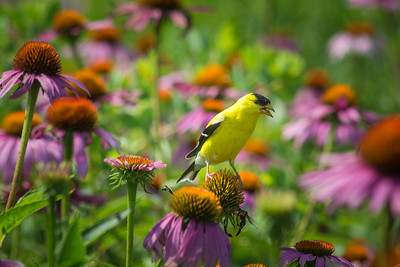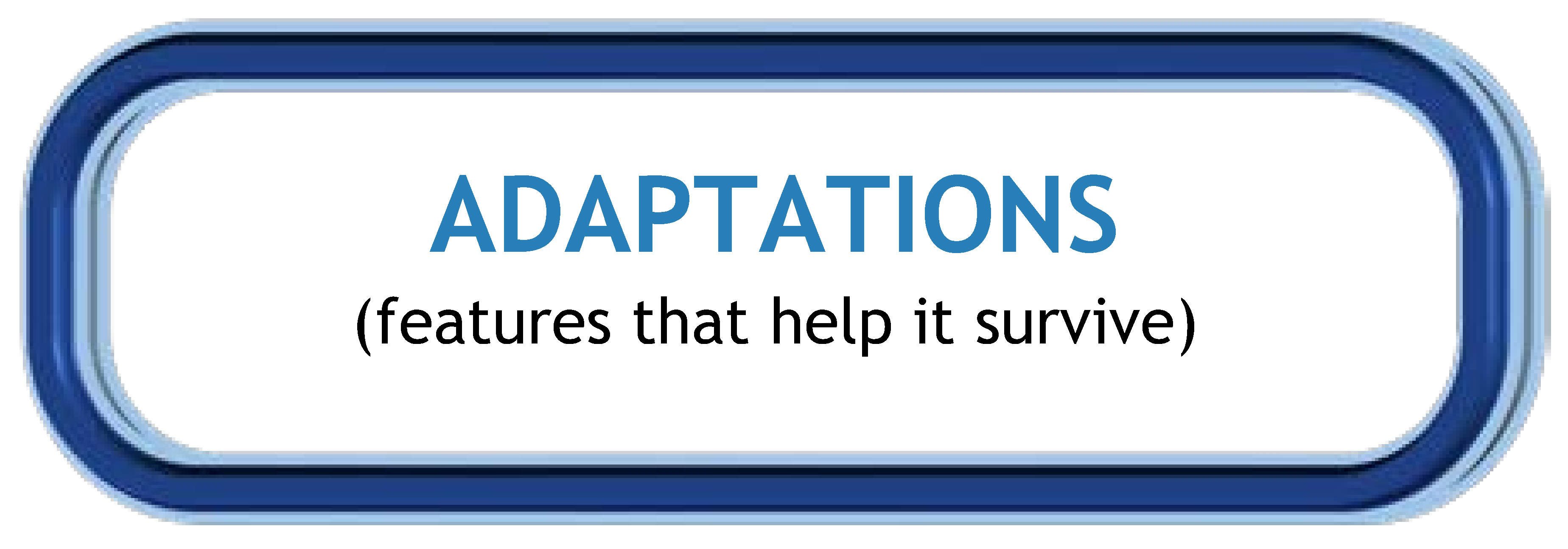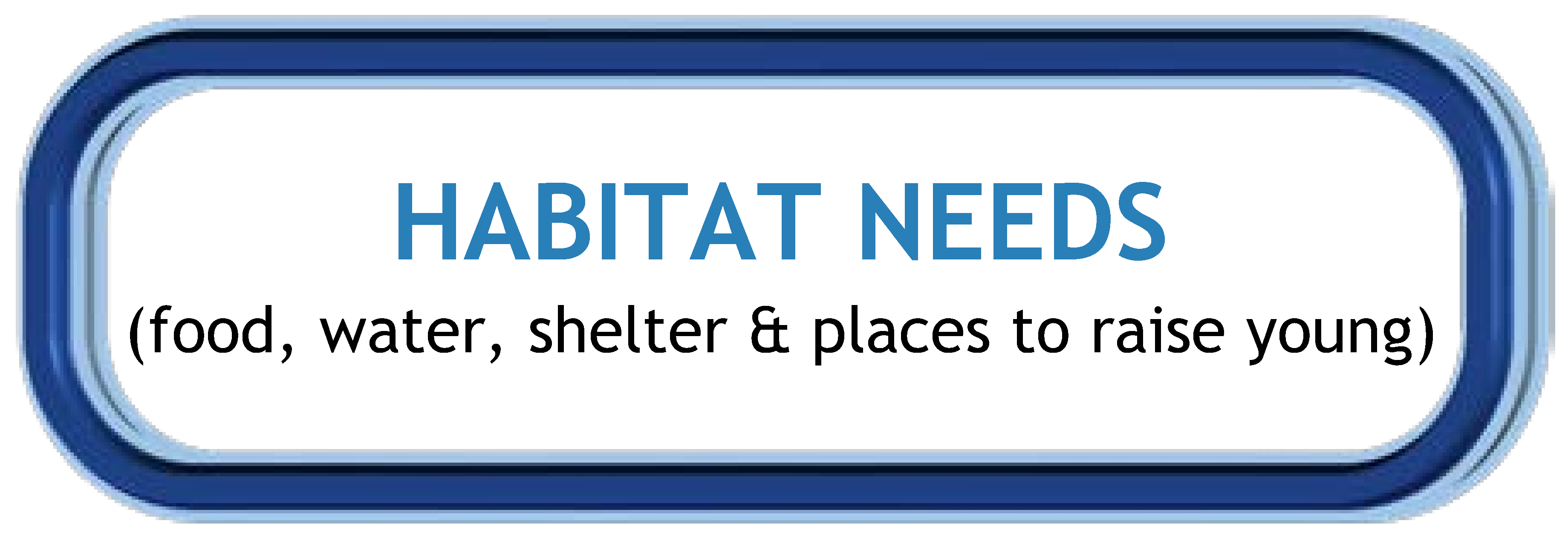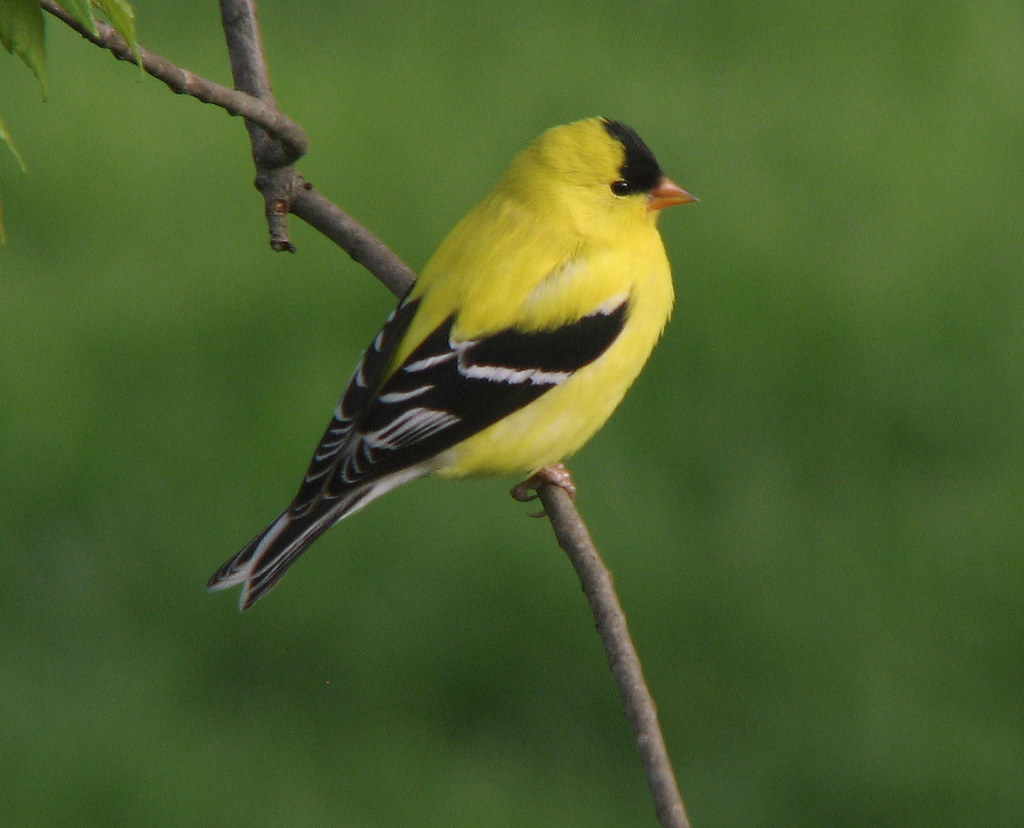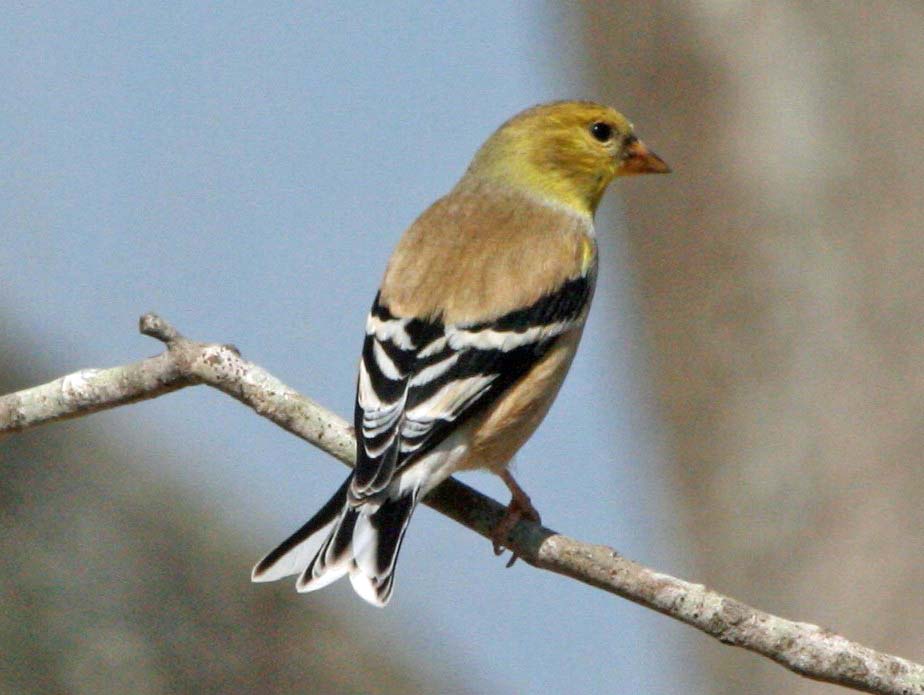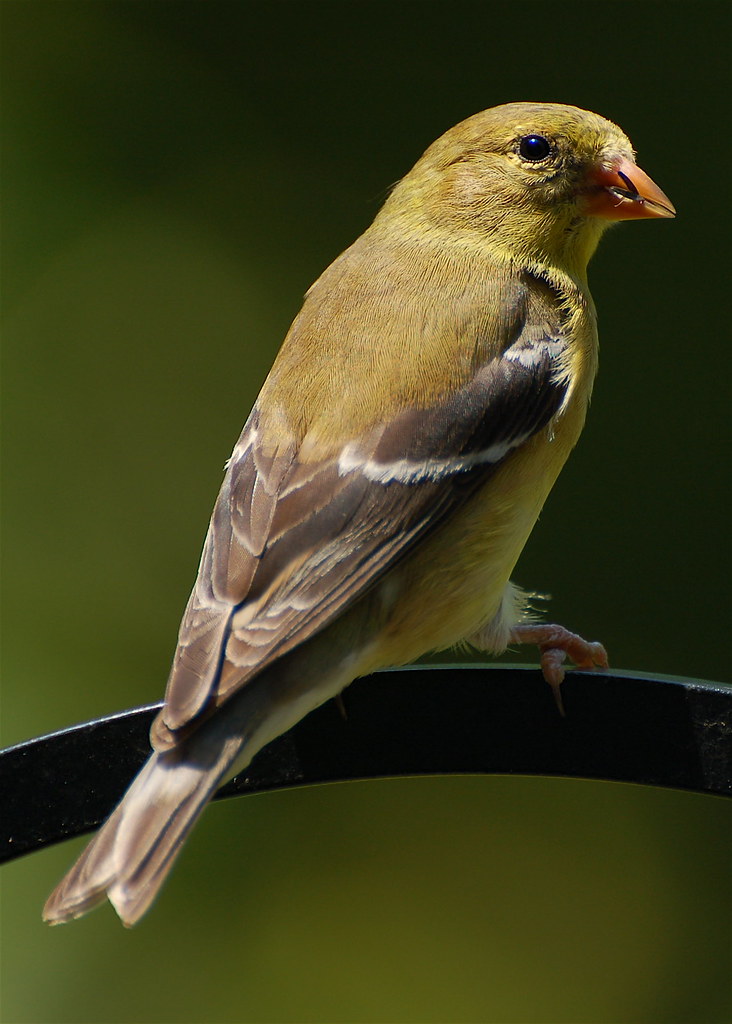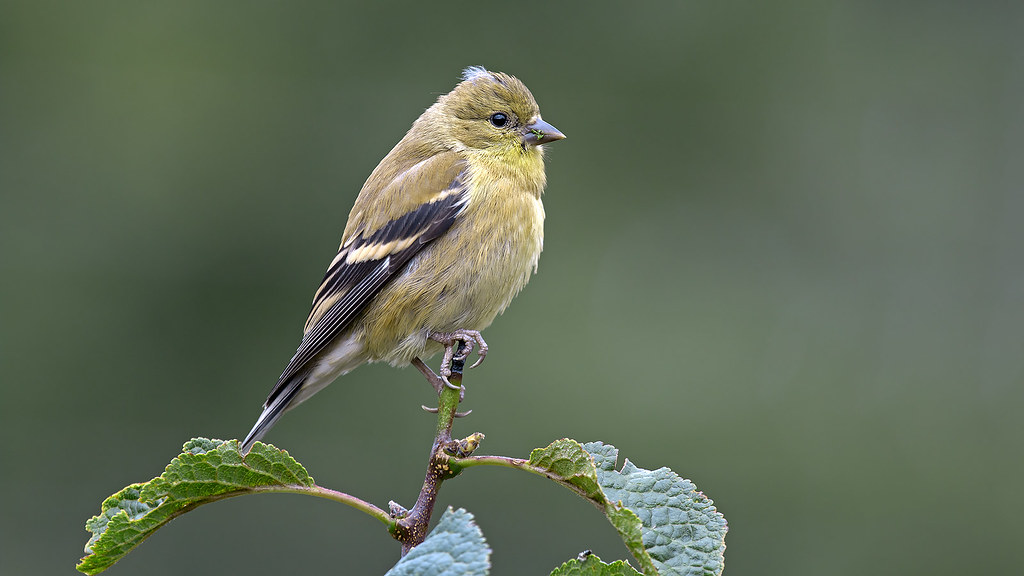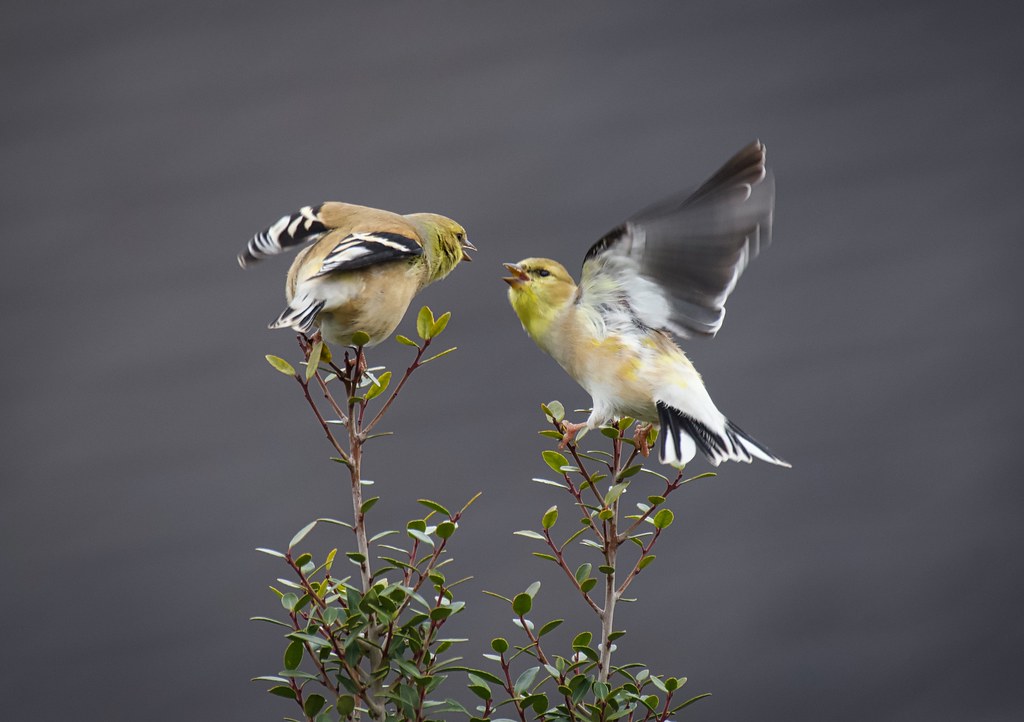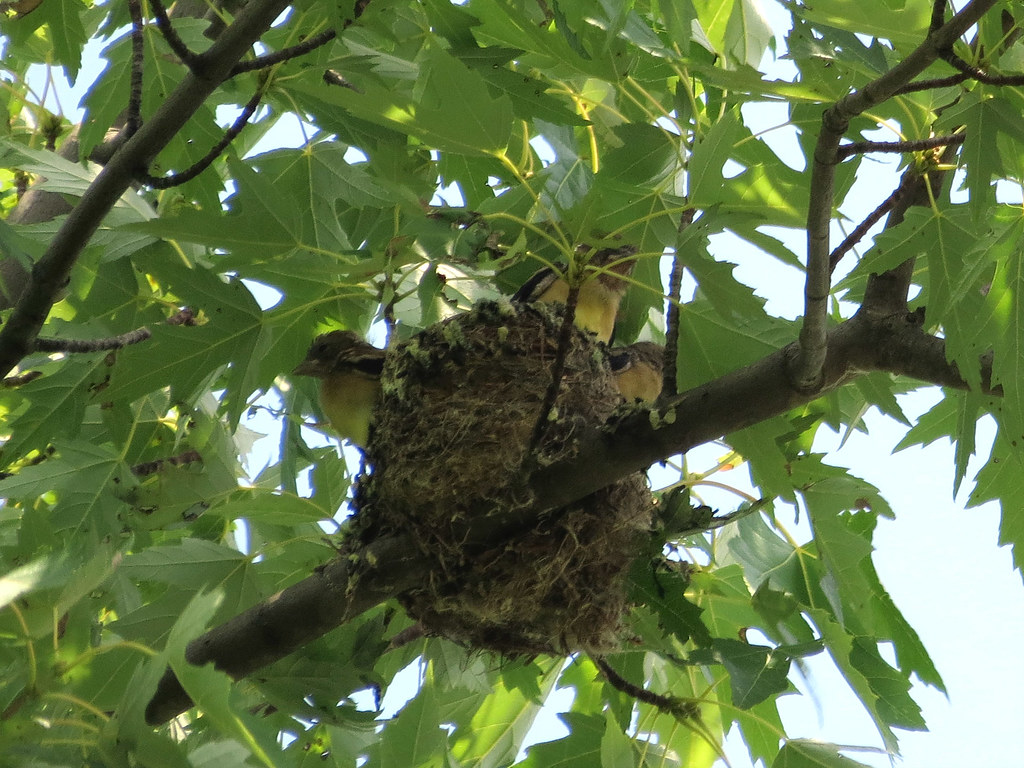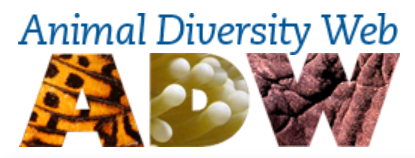Wonders of Wildlife: American Goldfinch
American Goldfinch
Scientific Name: Spinus tristis
Found in Alabama: Year-round in northern parts of state; In Coastal Plain, common during the fall, winter, and spring
Diet: Herbivore (eats plants)
Learn more about... |
American Goldfinch
flickr - Pen Waggener
Click image to enlarge it
|
| CLASSIFICATION |
| |
|
|
What type of animal am I?
- I am a vertebrate (an animal with a spine or backbone).
- I am warm-blooded, so I can control my body temperature.
- I have feathers on the outside of my body that keep me warm.
- I breathe with lungs just like you.
- I have 2 legs.
- I have wings.
|
Scientists use basic traits to group animals into different taxonomic classes.
For a taxonomic classification chart comparing key traits of common backyard wildlife,
CLICK HERE! |
|
| The American Goldfinch is a BIRD! |
| IDENTIFICATION TIPS |
| |
|
Size: |
- Range in length from 4.3 - 5.1 inches
- Weigh less than an ounce
- Wingspan is 7.5 - 8.7 inches
|
|
Key
Characteristics:
|
- Bright or dull yellow with black wings
- Wings have pale wing bars
- Beaks are orange and cone-shaped
|
| |
|
| |
|
Males
(Spring and Summer) |
Males
(Fall and Winter) |
- Bright yellow with black forehead, tail, and wings
- White patches above and below the tail
|
- Duller yellow in color
- Similar in appearance to females
- Yellow shoulder patches
|
|
|
|
American Goldfinch Breeding Plumage
flickr - fishhawk
Click image to enlarge it |
American Goldfinch Male in Transition from Winter Plumage into Breeding Plumage
Wikimedia - Dick Daniels
Click image to enlarge it |
| |
|
Females
(Year-round) |
Juveniles
(the Young) |
- Duller yellow in color
- Olive brown color on back and olive yellow color below
|
- Brown on top and pale yellow underneath
- Dark wings with lighter colored wingbars
|
|
|
American Goldfinch Juvenile
flickr - Tibor Nagy
Click image to enlarge it |
American Goldfinch Female
flickr - Erik Dunham
Click image to enlarge it |
|
| ADAPTATIONS |
| |
| PHYSICAL ADAPTATIONS |
| |
| American Goldfinches molt their feathers twice each year: |
- Feathers on a bird are similar to hair or fingernails on a human. They are made or a substance called keratin and are essentially a dead material. If a feather is damaged, it does not repair itself.
- Each year, birds go through a process called molting in which they drop their old feathers and grow in new feathers.
- By growing in new, undamaged feathers, a bird is able to keep itself warm and dry as well as in top flying condition.
- American Goldfinches are somewhat unique in that they molt twice per year. One molt is during the spring migration (movement of a group of animals) north, and the second molt is before they migrate south in the fall.
- In the spring molt, male American Goldfinches grow in bright yellow feathers that help them attract females. In the fall, they drop their bright feathers and grow in new, drab brown colored feathers.
- Not only do the new, undamaged feathers help them with flight during the fall migration, the drab colors also help them camouflage (the ability to easily blend in with the surrounding environment) during this migration.
|
| |
| Birds can fly: |
- Birds have feathers on their wings rather than hair like humans. Feathers are light, waterproof, and are adjustable for flight control.
- Birds have lightweight beaks instead of heavy jaws and teeth like humans.
- Most bones in their bodies are hollow or honeycombed, making them very lightweight. Some of their bones are fused for increased efficiency and lighter weight.
- Birds have a larger and more efficient respiratory system than humans do since flight is a physically-demanding activity.
|
| |
| Birds can digest whole food: |
- Birds do not have teeth and are not able to chew food. Because of this, they have a specialized part of their stomach, called a gizzard, that helps with digestion by grinding food.
- The small stones, sand, and grit that birds pick up while they are eating are stored in the gizzard.
- Once food is swallowed and makes its way to the gizzard, it is pulverized by the grit and stomach muscles.
- Some birds like chickens, ducks, and turkeys have thick, muscular gizzards. Other birds that eat food items that are easy to digest, such as nectar and soft-bodied insects, have thin-walled gizzards.
|
| |
| BEHAVIORAL ADAPTATIONS |
| |
| American Goldfinches are diurnal: |
- They are active during the day (diurnal).
|
| |
| American Goldfinches can be territorial during breeding season: |
- For most of the year, American Goldfinches can be found feeding around other finches and moving around with other finches in loose colonies.
- During breeding season, American Goldfinches become slightly more aggressive toward intruders that come near their nest site.
- The aggression can be mild with a bird positioning its head in an upward position with its legs and neck extended.
|
American Goldfinch Aggressive Behavior
flickr - Kevin Milazzo
Click image to enlarge it
|
- More aggressive behaviors include lowering the neck and raising their wings with the beak pointed toward the opponent or retracting the neck, opening the mouth, sleeking the body feathers to appear thin while fanning out the tail feathers.
|
| |
| American Goldfinches make displays during breeding season: |
- Like many birds, during the breeding season male American Goldfinches sing in an attempt to attract females.
- American Goldfinch males also use flying maneuvers to attract females.
- If a female chooses a male, they will fly together as a pair while the male sings.
|
| |
| LIFE CYCLE |
| |
|
|
| Life Cycle Stages of the American Goldfinch |
| |
|
|
Nest: |
- A cup-shaped nest made of plant roots and other plant materials that are tightly woven together.
- Nest is lined with soft parts of plant materials, usually from the seeds they feed on such as milkweed.
|
American Goldfinch Nest
flickr - Brian Henderson
Click image to enlarge it |
| |
|
Eggs: |
- Females lay 2 - 7 hard-shelled eggs per brood.
- Eggs are blue or whiteish in color.
- They usually have 1 brood per year.
|
| |
|
|
Young: |
- Babies hatch from the eggs after 12 - 14 days.
- When they hatch, they have few wisps of soft gray fluffy feathers.
- They begin molting in their juvenile feathers and complete their molt between 11 and 17 days.
|
| |
|
|
Life Span: |
- Average 3 - 6 years but can live up to 10 years.
|
| |
|
|
NATURAL
Habitat Needs |
ADULTS |
YOUNG |
| Food |
- In warmer months, the feed almost exclusively on seeds.
- Prefer seeds from sunflowers, thistles, asters, and grasses.
- They will feed on seeds from alder trees, birch trees, western red cedar trees, and elm trees.
- In colder months, they prefer to feed on seeds from herbaceous (non-woody) plants but will feed on pine cones, berries, and some insects.
|
- While female is sitting on the nest, the male collects food.
- When the young have grown in feathers and can keep themselves warm, both parents gather food.
- Parents regurgitate grains mixed with some insects for the young.
|
| Water |
- Drink from sources of freshwater including slow flowing streams, shallow pools, and dew.
|
- Hydration is obtained through food sources regurgitated to them by the parents.
|
| Shelter |
- Live in open woodlands, forest edges, plains, weedy fields, brushy areas, and floodplains.
- They will roost (rest) in trees during the non-breeding season.
|
- Nests are built high in shrubs or in trees.
- Young remain in or around the nest for about a month after hatching before becoming independent from parents.
|
| Places to Raise Young |
- Build nests high in shrubs or in trees.
- Nest is an open cup made from tightly woven plant materials and lined with soft plant materials, usually from the seeds on which they feed.
|
|
BACKYARD
Habitat Needs |
ADULTS |
YOUNG |
| Food |
- Plant native thistles, native milkweed, and other herbaceous seeding plants.
- Bird feeders are helpful, especiallyin colder months when natural food sources are more scarce.
- Provide sunflower and thistle seeds in bird feeders.
- They will visit hopper, platform, or hanging feeders.
|
- Provide food sources for the parents, as they feed the young.
|
| Water |
- Provide a birdbath if a stream or pond is not located nearby.
|
| Shelter |
- Create a brushy habitat with herbaceous (non woody) seeding plants and shrubs.
|
- Provide a habitat with shrubs and trees in which the female can build the nest.
|
| Places to Raise Young |
- Provide a habitat with shrubs and trees in which the female can build the nest.
- Provide herbaceous (non woody) plants from which females can use materials to construct the nest.
|
|
| ECOLOGICAL ROLE |
| |
|
| Animals play an important ecological role in the health of habitats and ecosystems. |
| |
|
Food Source: |
- American Goldfinches are a food source for the Eastern garter snake, blue jays, American kestrels, and weasels.
|
Predation by cats is the number one direct, human-caused threats to birds in the U.S. and Canada. In the U.S., as many as 2.4 billion birds are killed by cats each year.
To read more about this,
CLICK HERE! |
|
| |
|
| Seed Dispersal: |
- Because the American Goldfinch feeds mainly on seeds, they play a role in dispersing (movement from one place to another) seeds from the plant and tree seeds on which they feed.
|
| |
|
|
INFORMATION SOURCES FOR THIS SPECIES
.
 Wildlife Tag
Wildlife Tag
